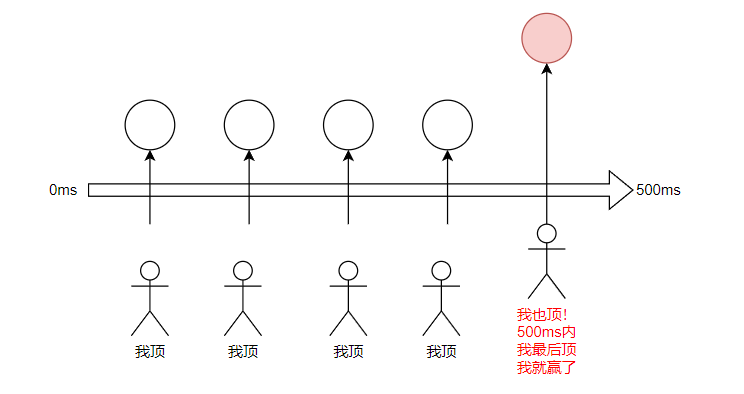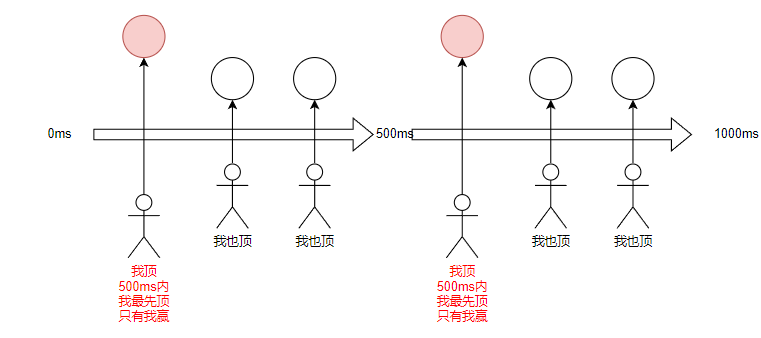一,闭包
1,什么是闭包
闭包 是指一个函数和其周围的词法环境(lexical environment)的组合。
换句话说,闭包允许一个函数访问并操作函数外部的变量。
闭包的核心特性:
- 函数内部可以访问外部函数的变量
- 即使外部函数已经返回,内部函数仍然可以访问这些变量
- 闭包可以保护变量不被垃圾回收机制回收
一个简单的例子:
javascript
function outerFunction(x) {
let y = 10
function innerFunction() {
// 内部函数innerFunction可以访问外部函数outerFunction的变量y
console.log(x + y)
}
// 外部函数outerFunction返回内部函数innerFunction
return innerFunction
}
const closure = outerFunction(5)
closure() // 输出: 15
// 即使outerFunction已经执行完毕,但是closure仍然可以访问 x 和 y 的值
closure() // 输出: 15在这个例子中:
- outerFunction 返回了 innerFunction
- innerFunction 形成了一个闭包,它可以访问 outerFunction 的参数 x 和局部变量 y
- 即使 outerFunction 已经执行完毕,closure 仍然可以访问 x 和 y
2,闭包的应用场景
1,数据隐私:闭包可以用来创建私有变量和方法
javascript
function createCounter() {
let count = 0;
return {
increment: function() { count++; },
getCount: function() { return count; }
};
}
const counter = createCounter();
counter.increment();
console.log(counter.getCount()); // 输出: 1
console.log(counter.count); // 输出: undefined2,函数工厂:闭包可以用来创建定制的函数
javascript
function multiplyBy(factor) {
return function(number) {
return number * factor;
};
}
const double = multiplyBy(2);
console.log(double(5)); // 输出: 103,模块化代码:闭包可以用于实现模块模式,封装私有状态和行为
javascript
const module = (function() {
let privateVariable = 0;
function privateFunction() {
console.log('私有函数');
}
return {
publicMethod: function() {
privateVariable++;
privateFunction();
},
getPrivateVariable: function() {
return privateVariable;
}
};
})();
module.publicMethod();
console.log(module.getPrivateVariable()); // 输出: 13,注意事项
1,内存管理:闭包会保持对其外部作用域的引用,这可能导致内存泄漏。
javascript
// 潜在的内存泄漏
function createLargeArray() {
let largeArray = new Array(1000000).fill('some data');
return function() {
console.log(largeArray[0]);
};
}
let printArrayItem = createLargeArray(); // largeArray 会一直存在于内存中
// 解决方式1:在不需要时解除引用
printArrayItem = null; // 现在 largeArray 可以被垃圾回收
// 解决方式2:立即执行函数表达式(IIFE)来限制闭包的生命周期
(function() {
let largeArray = new Array(1000000).fill('some data');
console.log(largeArray[0]);
})(); // largeArray 在函数执行后立即可以被回收2,循环中创建闭包:闭包会捕获循环变量的最终值,而不是每次迭代的值。
javascript
// 闭包会捕获循环变量的最终值,而不是每次迭代的值
for (var i = 1; i <= 5; i++) {
setTimeout(function() {
console.log(i);
}, i * 1000);
}
// 解决方法:
// 1. 使用 let 替换 var
// 2:使用立即执行函数创建新的作用域
for (var i = 1; i <= 5; i++) {
(function(j) {
setTimeout(function() {
console.log(j);
}, j * 1000);
})(i);
}3,性能考虑:过度使用可能会影响性能,每个闭包都会占用内存,并且可能影响垃圾回收。在性能敏感的应用中应谨慎使用闭包。
4,this 绑定问题:在闭包中,this 的值可能会出人意料。
javascript
const obj = {
value: 'Hello',
sayHello: function() {
setTimeout(function() {
console.log(this.value);
}, 1000);
}
};
obj.sayHello(); // 输出: undefinedsayHello 方法内部的 setTimeout 使用了一个普通的函数( function() { ... } ),而不是箭头函数。普通函数的 this 关键字在运行时是根据调用上下文来确定的,而不是根据定义时的上下文。
在 setTimeout 的回调函数中, this 不再指向 obj ,而是指向全局对象(在浏览器中是 window ),或者在严格模式下是 undefined 。因此,当你尝试访问 this.value 时,它实际上是在访问全局对象的 value 属性,而全局对象并没有 value 属性,所以输出为 undefined 。
只需要改用箭头函数,因为箭头函数不会创建自己的 this ,它会捕获外部上下文的 this 值:
javascript
const obj = {
value: 'Hello',
sayHello: function() {
setTimeout(() => {
console.log(this.value);
}, 1000);
}
};
obj.sayHello(); // 输出: Hello二,防抖
防抖的核心思想是,在事件被触发n秒后再执行回调,如果在这n秒内事件又被触发,则重新计时。这可以使得连续的函数调用变为一次。

举个例子:
javascript
function debounce(func, delay) {
let timer = null;
return function(...args) {
clearTimeout(timer);
timer = setTimeout(() => {
func.apply(this, args);
}, delay);
}
}
// Usage
const expensiveOperation = debounce(() => {
console.log('Expensive operation')
}, 500)
expensiveOperation()- 在 debounce 函数中, timer 变量是在 debounce 函数的作用域内定义的。返回的函数(即 function (...args) )可以访问 timer 变量,因此每次调用返回的函数时,它都可以使用和修改 timer ,从而实现防抖的效果。
在搜索框输入查询、表单验证、按钮提交事件、浏览器窗口缩放resize事件中的应用:
html
<!DOCTYPE html>
<html lang="en">
<head>
<meta charset="UTF-8">
<meta name="viewport" content="width=device-width, initial-scale=1.0">
<title>Debounce Demo</title>
<style>
body {
font-family: Arial, sans-serif;
max-width: 600px;
margin: 0 auto;
padding: 20px;
}
.section {
margin-bottom: 20px;
padding: 10px;
border: 1px solid #ddd;
border-radius: 5px;
}
input, button {
margin: 5px 0;
padding: 5px;
}
#email-error {
color: red;
}
</style>
</head>
<body>
<h1>Debounce Demo</h1>
<div class="section">
<h2>1. Search Input</h2>
<input type="text" id="search-input" placeholder="Search...">
<div id="search-results"></div>
</div>
<div class="section">
<h2>2. Email Validation</h2>
<input type="email" id="email-input" placeholder="Enter email">
<div id="email-error"></div>
</div>
<div class="section">
<h2>3. Submit Button</h2>
<button id="submit-button">Submit</button>
<div id="submit-result"></div>
</div>
<div class="section">
<h2>4. Window Resize</h2>
<div id="window-size"></div>
</div>
<script>
// Debounce function
function debounce(func, delay) {
let timer = null;
return function(...args) {
clearTimeout(timer);
timer = setTimeout(() => {
func.apply(this, args);
}, delay);
}
}
// 1. Search Input
const searchInput = document.getElementById('search-input');
const searchResults = document.getElementById('search-results');
const debouncedSearch = debounce(function(query) {
console.log(`Searching for: ${query}`);
searchResults.textContent = `Results for: ${query}`;
}, 300);
searchInput.addEventListener('input', function(e) {
debouncedSearch(e.target.value);
});
// 2. Email Validation
const emailInput = document.getElementById('email-input');
const emailError = document.getElementById('email-error');
const debouncedValidateEmail = debounce(function(email) {
const isValid = /^[^\s@]+@[^\s@]+\.[^\s@]+$/.test(email);
emailError.textContent = isValid ? '' : 'Invalid email format';
}, 500);
emailInput.addEventListener('input', function(e) {
debouncedValidateEmail(e.target.value);
});
// 3. Submit Button
const submitButton = document.getElementById('submit-button');
const submitResult = document.getElementById('submit-result');
const debouncedSubmit = debounce(function() {
console.log('Form submitted');
submitResult.textContent = 'Form submitted at ' + new Date().toLocaleTimeString();
}, 1000);
submitButton.addEventListener('click', debouncedSubmit);
// 4. Window Resize
const windowSize = document.getElementById('window-size');
const debouncedResize = debounce(function() {
const size = `${window.innerWidth}x${window.innerHeight}`;
console.log(`Window resized to: ${size}`);
windowSize.textContent = `Window size: ${size}`;
}, 250);
window.addEventListener('resize', debouncedResize);
// Initial call to set the initial window size
debouncedResize();
</script>
</body>
</html>三,节流
节流的核心思想是,在一个单位时间内,只能触发一次函数。如果在单位时间内触发多次函数,只有一次生效。

防抖和节流的主要区别:
- 防抖是在最后一次事件触发后才执行函数,而节流是在一定时间内只执行一次。
- 防抖适合用于用户输入验证等需要等待用户操作完成的场景,而节流适合用于限制持续触发事件的频率。
举个例子:
javascript
function throttle(func, delay) {
let lastTime = 0;
return function(...args) {
const now = Date.now();
if (now - lastTime >= delay) {
func.apply(this, args);
lastTime = now;
}
}
}
// Usage
const expensiveOperation = throttle(() => {
console.log('Expensive operation')
}, 1000)
expensiveOperation()在滚动加载更多、按钮点击事件、DOM元素拖拽、Canvas画笔中的应用:
html
<!DOCTYPE html>
<html lang="en">
<head>
<meta charset="UTF-8">
<meta name="viewport" content="width=device-width, initial-scale=1.0">
<title>Throttle Demo</title>
<style>
body {
font-family: Arial, sans-serif;
max-width: 800px;
margin: 0 auto;
padding: 20px;
}
.section {
margin-bottom: 20px;
padding: 10px;
border: 1px solid #ddd;
border-radius: 5px;
}
#scroll-container {
height: 200px;
overflow-y: scroll;
border: 1px solid #ccc;
padding: 10px;
}
#drag-container {
width: 300px;
height: 100px;
background-color: #f0f0f0;
position: relative;
}
#draggable {
width: 50px;
height: 50px;
background-color: #3498db;
position: absolute;
cursor: move;
}
#canvas {
border: 1px solid #000;
}
</style>
</head>
<body>
<h1>Throttle Demo</h1>
<div class="section">
<h2>1. Scroll Loading</h2>
<div id="scroll-container">
<div id="scroll-content"></div>
</div>
</div>
<div class="section">
<h2>2. Button Click</h2>
<button id="click-button">Click Me Rapidly</button>
<div id="click-result"></div>
</div>
<div class="section">
<h2>3. Drag Element</h2>
<div id="drag-container">
<div id="draggable"></div>
</div>
<div id="drag-result"></div>
</div>
<div class="section">
<h2>4. Canvas Drawing</h2>
<canvas id="canvas" width="300" height="200"></canvas>
</div>
<script>
// Throttle function
function throttle(func, limit) {
let inThrottle;
return function(...args) {
if (!inThrottle) {
func.apply(this, args);
inThrottle = true;
setTimeout(() => inThrottle = false, limit);
}
}
}
// 1. Scroll Loading
const scrollContainer = document.getElementById('scroll-container');
const scrollContent = document.getElementById('scroll-content');
let itemCount = 20;
function addItems(count) {
for (let i = 0; i < count; i++) {
const item = document.createElement('p');
item.textContent = `Item ${itemCount++}`;
scrollContent.appendChild(item);
}
}
const throttledScroll = throttle(function() {
if (scrollContainer.scrollTop + scrollContainer.clientHeight >= scrollContainer.scrollHeight - 50) {
console.log('Loading more items...');
addItems(10);
}
}, 500);
scrollContainer.addEventListener('scroll', throttledScroll);
addItems(20); // Initial items
// 2. Button Click
const clickButton = document.getElementById('click-button');
const clickResult = document.getElementById('click-result');
let clickCount = 0;
const throttledClick = throttle(function() {
clickCount++;
clickResult.textContent = `Button clicked ${clickCount} times`;
}, 1000);
clickButton.addEventListener('click', throttledClick);
// 3. Drag Element
const draggable = document.getElementById('draggable');
const dragResult = document.getElementById('drag-result');
let isDragging = false;
draggable.addEventListener('mousedown', () => isDragging = true);
document.addEventListener('mouseup', () => isDragging = false);
const throttledDrag = throttle(function(e) {
if (isDragging) {
const containerRect = draggable.parentElement.getBoundingClientRect();
let x = e.clientX - containerRect.left - draggable.offsetWidth / 2;
let y = e.clientY - containerRect.top - draggable.offsetHeight / 2;
x = Math.max(0, Math.min(x, containerRect.width - draggable.offsetWidth));
y = Math.max(0, Math.min(y, containerRect.height - draggable.offsetHeight));
draggable.style.left = `${x}px`;
draggable.style.top = `${y}px`;
dragResult.textContent = `Position: (${x.toFixed(0)}, ${y.toFixed(0)})`;
}
}, 50);
document.addEventListener('mousemove', throttledDrag);
// 4. Canvas Drawing
const canvas = document.getElementById('canvas');
const ctx = canvas.getContext('2d');
let isDrawing = false;
let lastX = 0;
let lastY = 0;
canvas.addEventListener('mousedown', (e) => {
isDrawing = true;
[lastX, lastY] = [e.offsetX, e.offsetY];
});
canvas.addEventListener('mouseup', () => isDrawing = false);
canvas.addEventListener('mouseout', () => isDrawing = false);
const throttledDraw = throttle(function(e) {
if (!isDrawing) return;
ctx.beginPath();
ctx.moveTo(lastX, lastY);
ctx.lineTo(e.offsetX, e.offsetY);
ctx.stroke();
[lastX, lastY] = [e.offsetX, e.offsetY];
}, 20);
canvas.addEventListener('mousemove', throttledDraw);
</script>
</body>
</html>